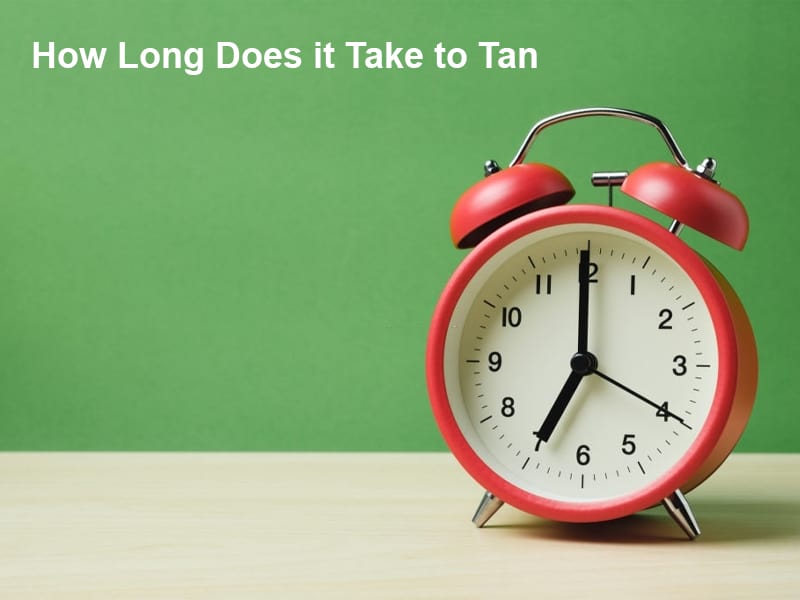Exact Answer: 1 – 3 Weeks
Poison ivy, belonging to the species of Toxicodendron radicans, is an allergenic Asian and North American flowering plant. The species is renowned for causing urushiol-induced contact dermatitis that is an itchy, irritating, and sometimes painful rash. Poison ivy is most thought of as an unwelcome weed.
Thus, poison ivy rash is caused by an allergic reaction to the oily resin called urushiol. Urushiol which causes the rash appears as a clear liquid compound present in the sap of the plant. This oily resin is in the leaves, stems, and roots of poison ivy.
The rash caused by poison ivy can last for weeks. It shows up as a red, itchy bump on the skin.

How Long Does Poison Ivy Last?
The main symptom of poison ivy is the appearance of a rash, otherwise known as contact dermatitis. The rash can be either mild or severe. It might appear immediately after 1 – 2 days after the contact with the toxic plant. It is marked by redness and swelling.
Rashes can form into small blisters which are extremely painful and itchy. Scratching the blisters should be avoided as the bacteria from under the fingernails can enter into the blisters and cause an infection.
| Condition | Duration For Healing |
| Previously had a rash from poison ivy (Mild rashes) | 1 – 2 weeks |
| Never had a rash from poison ivy before (Severe rashes) | 21 days or longer |
While poison ivy can grow in completely wild areas, it thrives in places that have been frequently disturbed by humans, such as along the sides of roads and tracks, or on the edges of cleared or developed plots of land. It is recognized as one of the species that can grow in places where other plants cannot.

Thus, to avoid coming in contact with poison ivy, one must limit exposure to it. Poison ivy is mostly known for its leaves. Each leaf has three leaflets. The three leaflets branch from the same spot on the plant. The two leaf stems of the sides tend to be shorter than the one in middle. A popular saying about poison ivy is, “Leaves of three, let them be”, implying that if one sees a poison ivy plant, ensure not to come in contact with it.
Why Does Poison Ivy Last So Long?
Poison ivy causes irritating, persistent itchy rashes which are accompanied by swelling on the surface of the skin. When one comes in contact with poison ivy, the painful and scratchy cycle can last for several weeks.
Mild cases of poison ivy can be treated with soothing lotions and cool baths at home. However, if the rash is severe and starts to widespread across the body then one must immediately consult a doctor for prescription medicine.
Symptoms and signs of poison include redness, severe itching, swelling, blisters, difficulty in breathing if the smoke from burning poison ivy is inhaled. The severity of the rash depends upon the amount of urushiol that gets on the skin.
The bacteria under the nails can enter the poison ivy rash when one scratches it due to constant itching. This can cause the skin to become infected. If one observes pus oozing from the blisters, seek medical help immediately. Accidentally inhaling urushiol present in poison ivy can cause serious difficulty in breathing as it causes inflammation of the lining of the lungs.

The risk of getting a poison ivy rash is increased when participating in outdoor activities like camping, hiking, gardening, farming, etc as they put one at a higher probability of exposure to poison ivy.
Conclusion
The rash due to poison ivy occurs in 3 phases: Phase 1 – The skin becomes red and itchy. Phase 2 – There is an eruption of a rash on the skin, appearing in a pattern of streaks or patches. Phase 3 – The rash turns into red bumps that can cause large oozing blisters.
The main causes of poison ivy rash are direct contact with the toxic plants of poison ivy, contact with objects contaminated with urushiol from the poison ivy plant, inhaling the smoke released when poison ivy is burnt.
Schedule an appointment with the doctor if one observes a severe or widespread reaction from poison ivy as antibiotics will likely be required for its treatment.





















It’s fascinating how such a simple danger as poison ivy can be so harmful. The risks are indeed high.
Poison ivy seems like a danger for anyone who loves outdoor activities. Some caution is necessary.
The severity of the poison ivy rash is quite alarming. Thought it was just a harmless plant until now.
Allergic reactions of any kind are just terrible. All the more reason to stay away from it as much as possible.
It’s amazing that such a plant can cause such complications to the skin. Nature is quite dangerous.
Reading this article made me appreciate the dangers of poison ivy even more. Hopefully I will never come across it.
This is quite informative. The risk of getting poison ivy rash can be much higher than I expected.
This article is highly informative and I think it should be shared. People should be warned of the dangers of poison ivy.
This is a topic that should be more widely understood, especially for people with a love of the outdoors.
Poison ivy is definitely something to be aware of and avoid at all costs. The risks are not worth it.